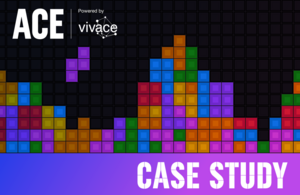Using AI to improve patient bed allocation decisions in hospital
ACE worked with managers at Kettering General Hospital to create a proof of concept which allows beds to be allocated more efficiently.

Bed space in hospitals is always at a premium, and the Accelerated Capability Environment (ACE) worked with managers at Kettering General Hospital (KGH) to explore how artificial intelligence (AI) could be used to support staff to make the best decisions based on available options.
Allocating beds has been likened to a game of Tetris, with human schedulers implementing the safest, most efficient bed management pathway for each patient. This is a complex task as they seek to match each patient with a bedspace providing the right resources (such as oxygen supply or being equipped to manage infectious illnesses) with the necessary clinical expertise, all under the heavy time pressure inherent in any major hospital.
Supporting ‘super humans’
To do this, these staff need to have an accurate running knowledge of current bed availability, the specific function of certain beds such as intensive care or those with oxygen availability, the optimum pathway for each patient based on their condition and gender, and when patient bed occupancy is due to end. When you add in the complication of COVID-19, and the need to isolate these patients from non-COVID hospital populations, it should come as no surprise that senior managers ACE worked with often referred to their bed managers as “super humans”.
The scarcity of these skills, and the inevitable gaps when these bed managers are on leave or unavailable means that there are times when a hospital just doesn’t operate as smoothly as it could.
Making the best possible decisions
ACE worked with KGH senior leaders, the NHS England AI Lab and Faculty from ACE’s Vivace supplier community to develop a proof of concept (PoC) with the overall aim of having the right patient in the right bed at the right time and supporting staff to make the best possible decisions from the options available.
Faculty, which were selected from five Vivace supplier pitches at an Accelerator Day, developed an AI-supported patient flow tool, built around a virtual hospital environment modelled on a selection of key KGH wards.
This was built at pace over 14 weeks, with senior administrative and clinical team members from Kettering positioned within the delivery team as product owners, to ensure the final code stayed true to its core purpose.
The PoC, which has been published on an open NHS England GitHib Repository:
- uses historic admission data to plot immediate demand against predicted demand
- generates bed suggestions for patients coming through the emergency department
- explains its recommendations, building trust in the tool as well as the underlying AI
Keeping humans involved
Explainability or ‘human-in-the-loop’ was a key requirement from the outset; ensuring that such an important AI tool does not operate as a closed black box, but instead always leaves schedulers to make the final bed allocation decision, based on a series of ranked options.
When used, the PoC enables:
- more efficient bed scheduling through machine learning optimisation and support
- more effective bed scheduling based on more and better data
- a reduction in overall bed moves by considering patients now and in the future
- improved patient outcomes and cost reductions through fewer moves
Next steps for this PoC after user testing at KGH, which aspires to be England’s most digital hospital, are supporting multiple admissions, transfers and discharges, integrating with existing systems such as the Patient Administration System and incorporating all specialties, wards and bed types.